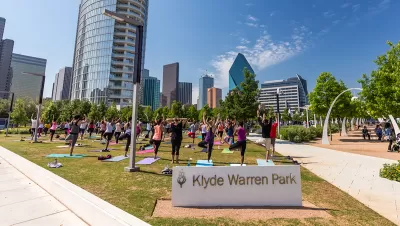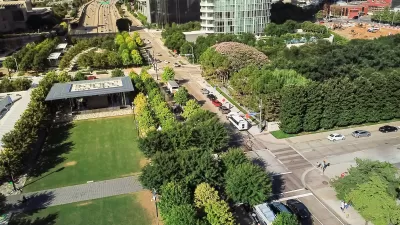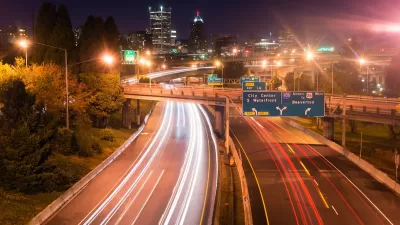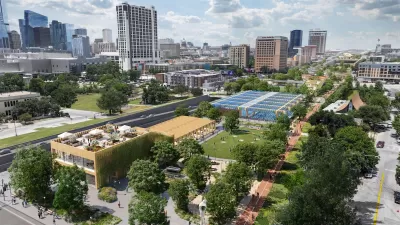Building over highways is not a particularly new idea, but it has been a rare novelty. Former SPUR director and development consultant Jim Chappell sees a brighter future for highway caps parks and projects.

With the price of urban real estate going up and up, highway airspace development becomes more viable. There are numerous projects around the country, both past and future. SPUR's former director, now a consultant, reviews a few and sees a promising future for developing in airspace over freeways and highways. He notes:
. . . there are currently 20 other parks over or replacing highways in the US and at least another 26 in some stage of proposal.
Chappell notes that while existing caps are parks or convention centers, that's changing:
In the District of Columbia, Property Group Partners are building a 7.5 acre, $1.3 billion project with five-130 foot high, mixed use commercial, office and residential buildings, totaling 2.2 million leasable square feet. All of this, plus 1.5 acres of open space, over the 3-block long, 200 foot wide, eight lane Center Leg Freeway (I-395). The lid will be completed this year, and the first building is projected to open in 2018. When complete in 2022, the project is anticipated to generate $40 million per year in property taxes alone.[4]
If $1.3 billion sounds expensive, consider Hudson Yards, two superblocks on the West side of Manhattan. Related Companies is in the midst of constructing a $25 billion 28-acre neighborhood with 18 million square feet of mixed use, all over operating rail yards. [5] $25 billion!
FULL STORY: Don’t listen to Mark Twain – freeway caps gaining traction

Alabama: Trump Terminates Settlements for Black Communities Harmed By Raw Sewage
Trump deemed the landmark civil rights agreement “illegal DEI and environmental justice policy.”

Planetizen Federal Action Tracker
A weekly monitor of how Trump’s orders and actions are impacting planners and planning in America.

The 120 Year Old Tiny Home Villages That Sheltered San Francisco’s Earthquake Refugees
More than a century ago, San Francisco mobilized to house thousands of residents displaced by the 1906 earthquake. Could their strategy offer a model for the present?

In Both Crashes and Crime, Public Transportation is Far Safer than Driving
Contrary to popular assumptions, public transportation has far lower crash and crime rates than automobile travel. For safer communities, improve and encourage transit travel.

Report: Zoning Reforms Should Complement Nashville’s Ambitious Transit Plan
Without reform, restrictive zoning codes will limit the impact of the city’s planned transit expansion and could exclude some of the residents who depend on transit the most.

Judge Orders Release of Frozen IRA, IIJA Funding
The decision is a victory for environmental groups who charged that freezing funds for critical infrastructure and disaster response programs caused “real and irreparable harm” to communities.
Urban Design for Planners 1: Software Tools
This six-course series explores essential urban design concepts using open source software and equips planners with the tools they need to participate fully in the urban design process.
Planning for Universal Design
Learn the tools for implementing Universal Design in planning regulations.
Clanton & Associates, Inc.
Jessamine County Fiscal Court
Institute for Housing and Urban Development Studies (IHS)
City of Grandview
Harvard GSD Executive Education
Toledo-Lucas County Plan Commissions
Salt Lake City
NYU Wagner Graduate School of Public Service





























